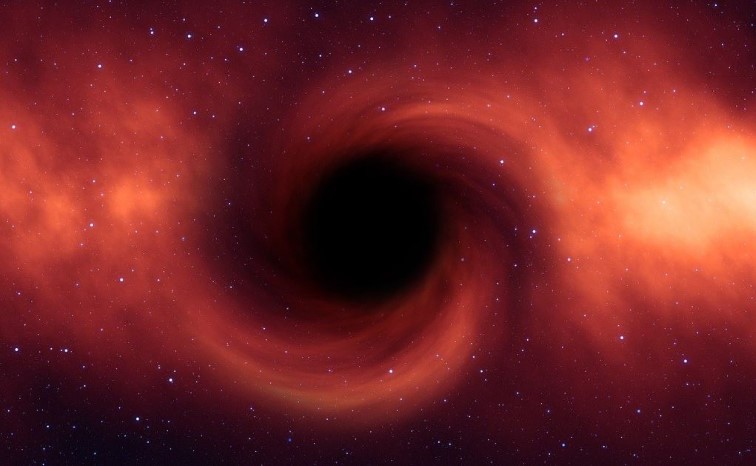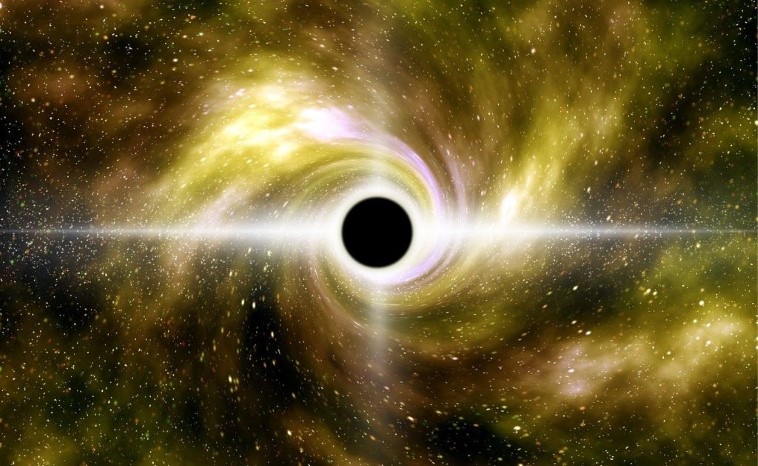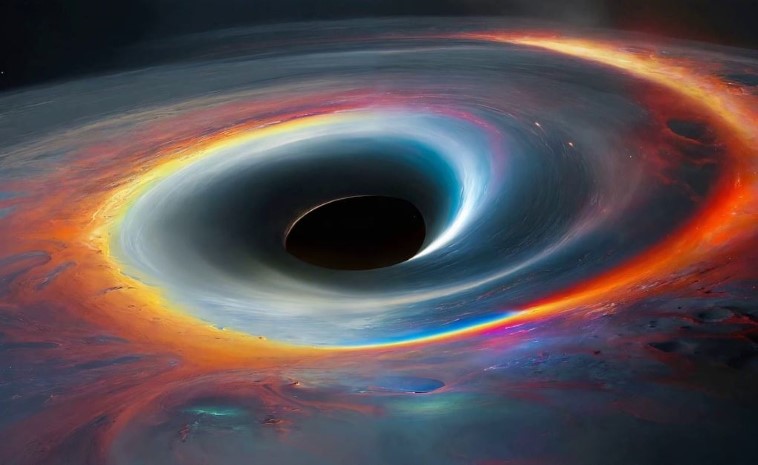The 101 facts to know about black holes

It’s hard to come up with something as strange as black holes. Only nature could do something peculiar. Thousands of books and articles have been written about black holes, but again what we really know about them is that they are objects in space with incredibly strong gravity. So strong that it’s hard to explain.
That is why you will always inevitably hear the word light in the saga of the black hole. Therefore, it is such a strong gravity that, as they say often: nothing can escape it, not even light.
So, when something material gets close enough to such a hole – it’s over; something like that disappears forever into the hole. Only the imagination can escape from the black hole.
Horizon
There is an invisible boundary around the hole beyond which the black hole can’t reach you, but if you cross it, you disappear from the list of objects in the universe. And that limit is called the event horizon.
That term was coined by the physicist Wolfgang (Wolfgang Rindler, 1924-2019) with the explanation that it is a boundary in space-time in relation to the observer beyond which events cannot affect the observer.
Or a little more clearly: light and anything else inside the event horizon can never reach the observer (ie, it can’t leave the hole) and we can’t know anything about what went into the hole. No data from the hole can reach us.
But what is inside a black hole?

Well, scientists can only guess because no information is coming from the hole. And those assumptions are based on scientific logic, on mathematics, various comparisons, analogies, but still there is no hard, direct evidence for them.
Singularity
So, in the center of the hole there is a singularity, and a singularity in physics is a point where extreme gravitational forces reach infinite values. What gets there is crushed to nothingness.
Discovery
The existence of black holes follows from Einstein’s General Theory of Relativity, discovered by Carl Schwarzschild only a month or two after Einstein published his paper.
Karl Schwarzschild was a very prolific and versatile physicist and astronomer, dedicated to science. He came to this discovery in his spare time while staying in the trenches on the Russian front during the First World War.
Many physicists flatly rejected Schwarzschild’s discovery because it said that all the matter of a black hole is concentrated in a central point of infinite density and infinitesimal diameter, i.e. about the singularity. And the singularity is something that physicists would rather avoid.

However, over time physicists had to get used to and accept, albeit reluctantly, the singularity. It existed within a certain radius, which, as we mentioned a little before, was called the event horizon, also known as Schwarzschild’s radius. While you are outside that radius you can return home, and if you cross it – you disappear.
Name
Black holes got their name in 1968 thanks to the physicist John Wheeler (1911 —2008), who did not doubt the existence of black holes. Many physicists could not fathom the existence of black holes and believed that we misunderstood gravity, and that the general theory of relativity was incomplete.
But in 1971, astronomers confirmed the existence of the intense X-ray source Cygnus X-1 which is an X-ray source, the first to be accepted as a black hole because it was an object far smaller and much denser than any other known celestial object.
In other words, there was nothing else to be. Of course, astronomers could not see the black hole itself, but the light emitted by the matter just before the event horizon as it disappears into the black hole.
What’s in there?
What is of great interest to all those who know anything about black holes is what is inside, in a black hole?
It is not possible to have direct knowledge about it because simply no information comes out of the black hole. However, there are certain logical scientific assumptions about the interior of black holes. And we can accept those assumptions as correct. Partially.
The main problem
When something, anything material, crosses the event horizon, they quickly spiral towards the center of the hole. Singularity reigns in the centers.
According to the theory, singularity is a region of infinite gravity! This might not be true, despite what the math suggests.
Our understanding of relativity is incomplete because physics has failed to smooth out the mismatch between relativity (which rules in the macro world) and quantum mechanics (which prescribes the behavior of the micro world).
In other words, the presence of singularities is a sign that we do not understand the gravity of the world inside the atom.
How do black holes form?
Well, they arise from a big star at the end of its life. The star, at least eight times larger than the Sun, forms a core of iron and nickel in the last stage of its evolution.
And then the bitter struggle of two opposing forces in the stars reaches its peak. One, gravitational, strongly attracts the envelopes of the star, all the material towards the center, and the other, nuclear, simultaneously resists it and pushes the material outwards.
This finally leads to a disastrous effect. The star explodes in an instant with tremendous force. We call that explosion a supernova.
That is one scenario, and there is another.

The oldest black holes were created at the very beginning of the universe, less than a second after the Big Bang. Certain parts of the universe have reached absurdly high densities that have produced small black holes the size of baseballs. Those primordial black holes flooded the universe, and probably still roam the universe today.
It is also possible that some black holes were formed a few hundred million years after the Big Bang when gigantic regions of matter collapsed directly into the black holes.
Do we even know how many black holes there are in the galaxy?
No one knows that, and it is difficult to determine since black holes are not visible.
Their presence is detected through their gravitational influence on the nearby environment, sometimes through gravitational waves generated when black holes merge or by detecting X-ray radiation generated when a material object falls into a black hole.
And all of these are extremely rare events that often go unnoticed in the vastness of the universe.
Of course, astronomers also face more difficult problems, and still estimate the number of black holes. So, there are, depending on the data source, between several hundred million and several billion!
Some of the black holes can be quite small, but there are also gigantic, supermassive ones.
The closest black hole to us is considered to be Gaia BH1, which was discovered in 2022 by the European Space Agency’s Gaia mission. It is 1560 light years away from us.
Want to read more about the universe? Visit our blog!

